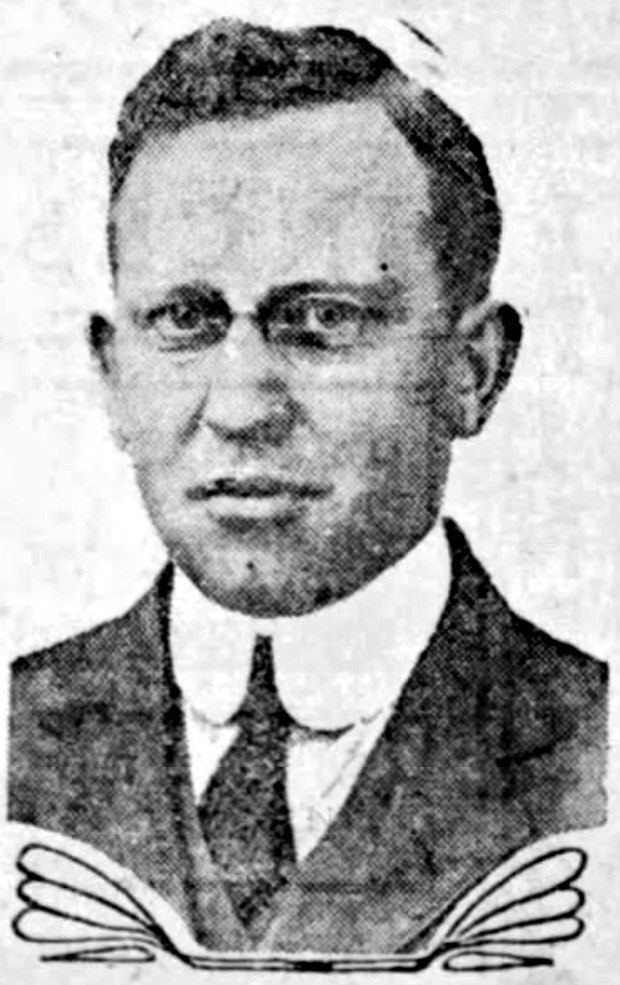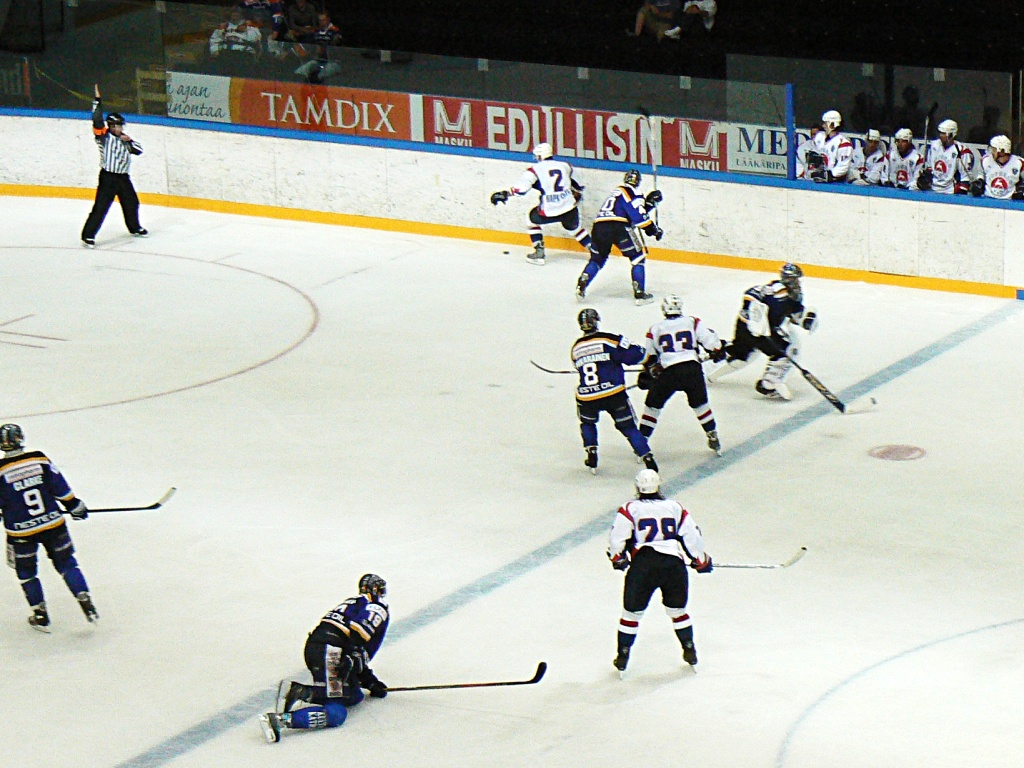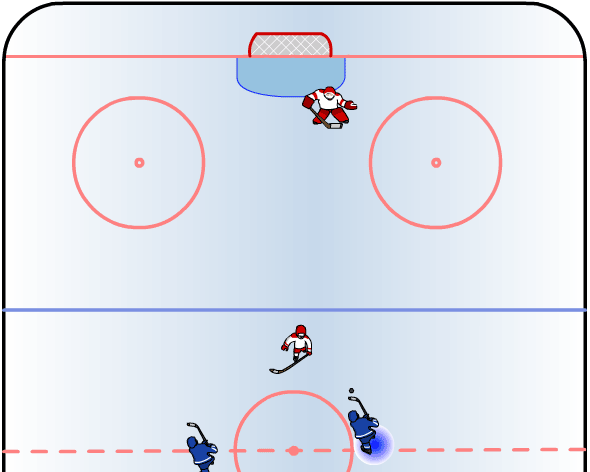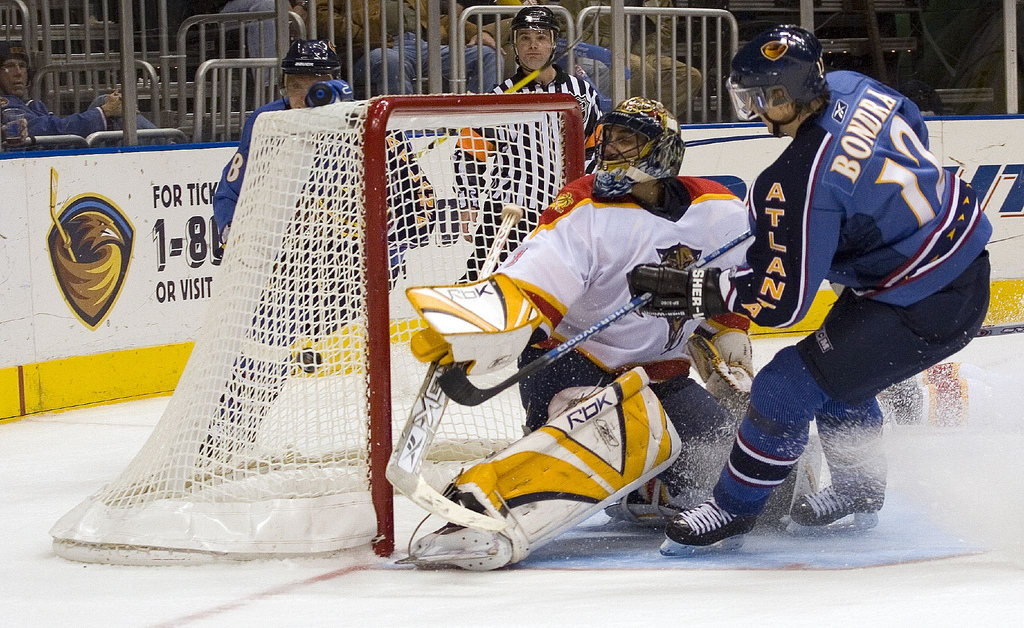|
Archie Briden
Edward Archibald "Red" Briden (July 16, 1897 – June 8, 1974) was a Canadian retired professional ice hockey player who played 14 games in the National Hockey Association, 72 games in the National Hockey League, 82 games in the Pacific Coast Hockey Association, and 55 games in the Western Canada Hockey League between 1916 and 1932. He played with the Toronto Blueshirts, Seattle Metropolitans, Victoria Cougars, Edmonton Eskimos, Calgary Tigers, Pittsburgh Pirates, Boston Bruins, and Detroit Cougars. He was raised in Renfrew, Ontario Renfrew is a town on the Bonnechere River in Renfrew County, Ontario, Canada. Located one hour west of Ottawa in Eastern Ontario, Renfrew is the fourth largest town in the county after Petawawa, Pembroke and Arnprior. The town is a small tra .... Career statistics Regular season and playoffs External links * 1897 births 1974 deaths Calgary Tigers players Cleveland Indians (IHL) players Boston Bruins players Canadian ice hockey left ... [...More Info...] [...Related Items...] OR: [Wikipedia] [Google] [Baidu] |
Winger (ice Hockey)
Winger, in the game of ice hockey, is a forward position of a player whose primary zone of play is along the outer playing areas. They typically flank the centre forward. Originally the name was given to forward players who went up and down the sides of the rink. Wingers generally have the least defensive responsibilities out of any position on the ice, however they are still tasked with defensive duties such as forechecking duties or covering the point in the defensive zone. Nowadays, there are different types of wingers in the game — out-and-out goal scorers, checkers who disrupt the opponents, and forwards who work along the boards and in the corners. Often a winger's precise role on a line depends upon what type of role the other winger plays; usually lines will have one more goal-scoring oriented winger and one winger more focused on playing the boards, checking and passing the puck to others to take shots (if a larger player, he will sometimes be called a "power forward ... [...More Info...] [...Related Items...] OR: [Wikipedia] [Google] [Baidu] |
Western Canada Hockey League
The Western Canada Hockey League (WCHL), founded in 1921, was a major professional ice hockey league originally based in the prairies of Canada. It was renamed the Western Hockey League (WHL) in 1925 and disbanded in 1926. The WCHL's Victoria Cougars were the last non-NHL team to win the Stanley Cup when they won the 1925 Stanley Cup Finals over the NHL's Montreal Canadiens. History Background The Stanley Cup was donated in 1893 to serve as a trophy to be awarded to the national champion of Canadian amateur ice hockey. The trophy eventually became open to professional teams in 1906 and a new trophy, the Allan Cup was donated to serve as the national amateur trophy. By this time, the Canadian Prairies were being rapidly settled and in 1914 a team based in Saskatchewan (the Regina Victorias) would capture the Allan Cup for the first time. By this time, competition for the Stanley Cup, had evolved into a World Series-inspired "East vs. West" affair to be contested between the win ... [...More Info...] [...Related Items...] OR: [Wikipedia] [Google] [Baidu] |
Big-4 League
The Big-4 League was a top level senior ice hockey league that operated in Calgary and Edmonton, Alberta for two seasons between 1919 and 1921. Created with the intention of competing for the Allan Cup senior-amateur championship, the league's existence was marred by accusations that its teams were secretly paying their players. The Big-4 lost its amateur status after its first season and operated as an independent league until further accusations of the use of ineligible players led to its collapse in 1921. Two of its teams, the Calgary Tigers and Edmonton Eskimos went on to form the professional Western Canada Hockey League. Founding By 1919, the Stanley Cup was no longer awarded to the top amateur team in Canada, reserved instead for the professional National and Pacific Coast leagues. The Allan Cup had been established as the new amateur championship in its place.Sandor, 2005, p. 20 The Big-4 was established in 1919 with the intention of bringing the Allan Cup to Alber ... [...More Info...] [...Related Items...] OR: [Wikipedia] [Google] [Baidu] |
1916–17 NHA Season
The 1916–17 NHA season was the eighth and final season of the National Hockey Association. Six teams were to play two half-seasons of ten games each, but this was disrupted and only four teams finished the season. The Montreal Canadiens defeated the Ottawa Senators in a playoff to win the NHA championship. The NHA franchise of the dormant Shamrocks was taken back from its owner Eddie Livingstone and used by the Toronto 228th Battalion, which had a number of NHA hockey players who had enlisted for military service. Also known as the Northern Fusiliers, the team played wearing khaki military uniforms and was the league's most popular and highest scoring club until the regiment was ordered overseas in February 1917 and the team was forced to withdraw. A scandal ensued when several stars were subsequently discharged, not having to fight and alleged they had been promised commissions solely to play hockey. The NHA would sue the 228th Battalion club for its withdrawal, though ultimate ... [...More Info...] [...Related Items...] OR: [Wikipedia] [Google] [Baidu] |
United States Amateur Hockey Association
The United States Amateur Hockey Association (USAHA) was an ice hockey governing body in the United States from 1920 to 1925, which operated at an amateur level. The league was filled with predominantly Canadian-born players, but struggled to achieve consistent attendance figures in the days before large arenas with artificial ice. The association disbanded in 1925, with some teams eventually joining the American Hockey Association, and one team joining the National Hockey League. History The United States Amateur Hockey Association (USAHA) was founded on October 25, 1920 in Philadelphia. The International Skating Union of America which had governed ice hockey until then, resolved to turn over control of the sport with the approval of the Amateur Athletic Union (AAU). The USAHA also inherited the existing affiliation agreement with the Canadian Amateur Hockey Association (CAHA), which allowed teams from the USAHA to play against teams in either the AAU or the CAHA. William Sam ... [...More Info...] [...Related Items...] OR: [Wikipedia] [Google] [Baidu] |
Northern Ontario Hockey Association
The Northern Ontario Hockey Association (NOHA) is an ice hockey governing body for minor, junior and senior ice hockey. The NOHA is sanctioned by the Ontario Hockey Federation and Hockey Canada. The major league run by the NOHA is the Northern Ontario Junior Hockey League of the Canadian Junior A Hockey League. History The NOHA was founded in 1919 and that same year became affiliated with the Ontario Hockey Association (OHA). In May 1963, the NOHA applied to the Canadian Amateur Hockey Association to become an equal branch to the OHA. When the request was denied, OHA president Lloyd Pollock stated that measures needed to be put in place to prevent the migration of players southwards to the more populated OHA, and preserve the leagues in Northern Ontario. During the summer in 1989, the Metro Toronto Hockey League, Ontario Minor Hockey Association (OMHA), OHA and NOHA, joined under the umbrella of the Ontario Hockey Federation (OHF). Each organization was given equal represent ... [...More Info...] [...Related Items...] OR: [Wikipedia] [Google] [Baidu] |
Penalty (ice Hockey)
A penalty in ice hockey is a punishment for an infringement of the rules. Most penalties are enforced by sending the offending player to a penalty box for a set number of minutes. During the penalty the player may not participate in play. Penalties are called and enforced by the referee, or in some cases, the linesman. The offending team may not replace the player on the ice (although there are some exceptions, such as fighting), leaving them short-handed as opposed to full strength. When the opposing team is said to be on a ''power play'', they will have one more player on the ice than the short-handed team. The short-handed team is said to be "on the penalty kill" until the penalty expires and the penalized player returns to play. While standards vary somewhat between leagues, most leagues recognize several common varieties of penalties, as well as common infractions. The statistic used to track penalties is called "penalty minutes" and abbreviated to "PIM" (spoken as single w ... [...More Info...] [...Related Items...] OR: [Wikipedia] [Google] [Baidu] |
Point (ice Hockey)
In ice hockey, point has three contemporary meanings. Personal stat A point is awarded to a player for each goal scored or assist earned. The total number of goals plus assists equals total points. The Art Ross Trophy is awarded to the National Hockey League (NHL) player who leads the league in scoring points at the end of the regular season. Team stat Points are also awarded to assess standings (or rankings). Historically, teams were awarded two points for each win, one point for each tie and no points for a loss. Such a ranking system, implemented primarily to ensure a tie counted as a "half-win" for each team in the standings, is generally regarded as British and/or European in origin and as such adopted by the National Hockey League which was founded in Canada where leagues generally used ranking systems of British origin. Awarding points in the standings contrasts with traditional American ranking systems favored in sports originating within the United States where today the m ... [...More Info...] [...Related Items...] OR: [Wikipedia] [Google] [Baidu] |
Assist (ice Hockey)
In ice hockey, an assist is attributed to up to two players of the scoring team who shot, passed or deflected the puck towards the scoring teammate, or touched it in any other way which enabled the goal, meaning that they were "assisting" in the goal. There can be a maximum of two assists per goal. The assists will be awarded in the order of play, with the last player to pass the puck to the goal scorer getting the primary assist and the player who passed it to the primary assister getting the secondary assist. Players who gain an assist will get one point added to their player statistics. Despite the use of the terms "primary assist" and "secondary assist", neither is worth more than the other, and neither is worth more or less than a goal. Assists and goals are added together on a player's scoresheet to display that player's total points. Special cases If a player scores off a rebound given up by a goaltender, assists are still awarded, as long as there is no re-possession by t ... [...More Info...] [...Related Items...] OR: [Wikipedia] [Google] [Baidu] |
Goal (ice Hockey)
In ice hockey, a goal is scored when the puck entirely crosses the goal line between the two goal posts and below the goal crossbar. A goal awards one point to the team attacking the goal scored upon, regardless of which team the player who actually deflected the puck into the goal belongs to (see also own goal). Typically, a player on the team attempting to score shoots the puck with their stick towards the goal net opening, and a player on the opposing team called a goaltender tries to block the shot to prevent a goal from being scored against their team. The term goal may also refer to the structure in which goals are scored. The ice hockey goal is rectangular in shape; the front frame of the goal is made of steel tube painted red (blue in the ECHL because of a sponsorship deal with GEICO) and consists of two vertical goalposts and a horizontal crossbar. A net is attached to the back of the frame to catch pucks that enter the goal and also to prevent pucks from entering it ... [...More Info...] [...Related Items...] OR: [Wikipedia] [Google] [Baidu] |
Season (sports)
In an organized sports league, a typical season is the portion of one year in which regulated games of the sport are in session: for example, in Major League Baseball the season lasts approximately from the last week of March to the last week of September. In other team sports, like association football or basketball, it is generally from August or September to May although in some countries - such as Northern Europe or East Asia - the season starts in the spring and finishes in autumn, mainly due to weather conditions encountered during the winter. A year can often be broken up into several distinct sections (sometimes themselves called seasons). These are: a preseason, a series of exhibition games played for training purposes; a regular season, the main period of the league's competition; the postseason, a playoff tournament played against the league's top teams to determine the league's champion; and the offseason, the time when there is no official competition. Preseason In ... [...More Info...] [...Related Items...] OR: [Wikipedia] [Google] [Baidu] |
Playoffs
The playoffs, play-offs, postseason or finals of a sports league are a competition played after the regular season by the top competitors to determine the league champion or a similar accolade. Depending on the league, the playoffs may be either a single game, a series of games, or a tournament, and may use a single-elimination system or one of several other different playoff formats. Playoff, in regard to international fixtures, is to qualify or progress to the next round of a competition or tournament. In team sports in the U.S. and Canada, the vast distances and consequent burdens on cross-country travel have led to regional divisions of teams. Generally, during the regular season, teams play more games in their division than outside it, but the league's best teams might not play against each other in the regular season. Therefore, in the postseason a playoff series is organized. Any group-winning team is eligible to participate, and as playoffs became more popular they were ... [...More Info...] [...Related Items...] OR: [Wikipedia] [Google] [Baidu] |







